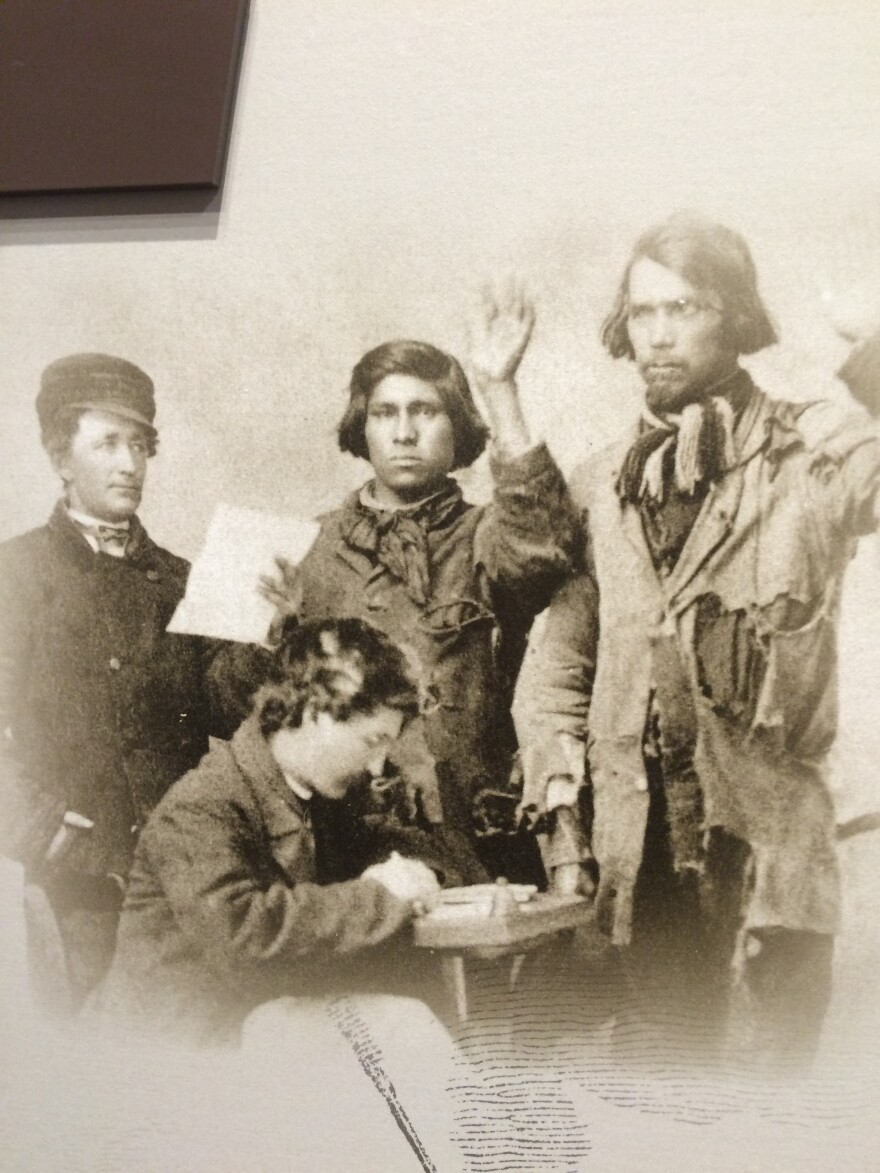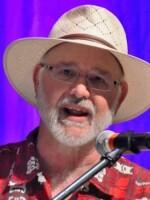Audio: As we enter the building a large wooden door closes, followed by the voice of Holly Baker:
“We are in what used to be the 2nd Infantry Barracks, but right now is serving as our museum and theater. And this is where we have our brand new exhibit The Fight Over Freedom, the story of Ft. Scott during The Bleeding Kansas and the Civil War periods”

Producer Mike Smith: “We’re taking a tour of the Ft. Scott National Historic Site, with Holly Baker of the National Park Service. Baker is the Chief of Interpretation and Resource Management at the 17 acre site which is restored and reconstructed to its original early 1840’s look as an Army post for Infantry and Dragoons protecting settlers traveling the Oregon and Santa Fe Trails.”
Holly Baker: “To sum up our story very briefly, we say it’s the story of America growing up, the story of America heading west. And our story is unique in that we actually have 4 periods of significance in that different stories occurred here in the 19th Century. We try to interpret and educate folks about all of those. They are The Early Frontier Period; The Bleeding Kansas Period; The Civil War; and The Railroad Expansion Period.”
Mike Smith: “Ft. Scott was established in 1842, and is named for General Winfield Scott, who commanded American forces in the War of 1812. Scott later became a hero of the Mexican-American War of 1846-47.”
HB: “There was a string of forts that Ft. Scott is a part of that stretched all the way from Minnesota to Louisiana. There were several forts along a line at what was then the western border of the United States with the intention of maintaining a level of peace between the European white settlers east of here in Missouri and Arkansas, and allowing the Native Americans to have what was called The Permanent Indian Frontier. So soldiers came to Ft. Scott, to be frank, to keep those groups separate. Unfortunately as we all know that didn’t last. Manifest Destiny and American’s desire for land extended all the way to California. So really the fort’s purpose and its original mission was over almost before it even began.”
MS: “Which brings us to The Bleeding Kansas Era. The Army abandoned the fort in 1853 and following the Kansas-Nebraska Act of 1854, 3 distinct groups flocked to Kansas to spread political influence: Free Staters; Pro Slavers; and Abolitionists. In 1855 the fort and its buildings were sold at auction and became the town of Fort Scott.”
HB: “A lesser known part of our story is the two buildings on opposite sides of the parade ground were turned into Hotels. On the South was the pro-slavery Western Hotel, and on the north the Free State hotel. So we had people living and actively promoting their causes within a few hundred yards of each other.”
MS: Kansas entered the Union as a Free State in January 1861, the same year the Civil War began, and that conflict brought the Army back to Ft. Scott. The fort had a hospital, was a major supply depot for Union forces in the west, and served as a site for the history making recruitment of some very special soldiers.”

HB: “One of the primary reasons why Ft. Scott was considered significant and worthy of becoming a National Historic Site w/in the National Park Service system, is this site was one of the first places where Native Americans and African Americans were recruited into the U.S. Army. Those units were the first African American soldiers to see combat in the Civil War. They were called The 1st Kansas Colored, and that was in 1863. We also had the 2nd Kansas Colored here, and this was all before the 54th Massachusetts, which you may have heard of”
MS: The Army closed the post in 1865 but returned 4 years later to establish The Post of Southeast Kansas. Its mission was to protect railroad workers during the western expansion. The post closed for good in 1873, but around 80 years later a citizens group began a lobbying effort for restoration. That was followed by 2 decades of archeological investigations along with architectural reconstruction and restoration. In 1978, the National Park Service named Ft. Scott a National Historic Site.”
HB: “The National Park Service mission overall is to preserve and protect America’s treasured places. And the American people have decided this historic site is one of those special places.”
Betty Boyko is Superintendent of the Ft. Scott National Historic Site, and the Ft. Larned National Historic Site. “I know I’ve heard visitors when I go on site (Ft. Scott) say Wow, This is one of Kansas’s Best Kept Secrets”. And it is, it truly has a wonderful story to tell, and I hope our young people come here and learn from our history and find relevancy in our park.”

For information on the Ft. Scott National Historic Site including is schedule of programs celebrating the National Park Service Centennial, visit www.nps.gov/fosc
As part of its Centennial Year, the National Park Service has collaborated with StoryCorp to share interviews and oral histories about NPS sites in the Midwest. Listen to retired Ft. Scott site historian Arnold Schofield talk with his friend, NPS Seasonal Volunteer Ranger Robert (Skip) Thomas link

















